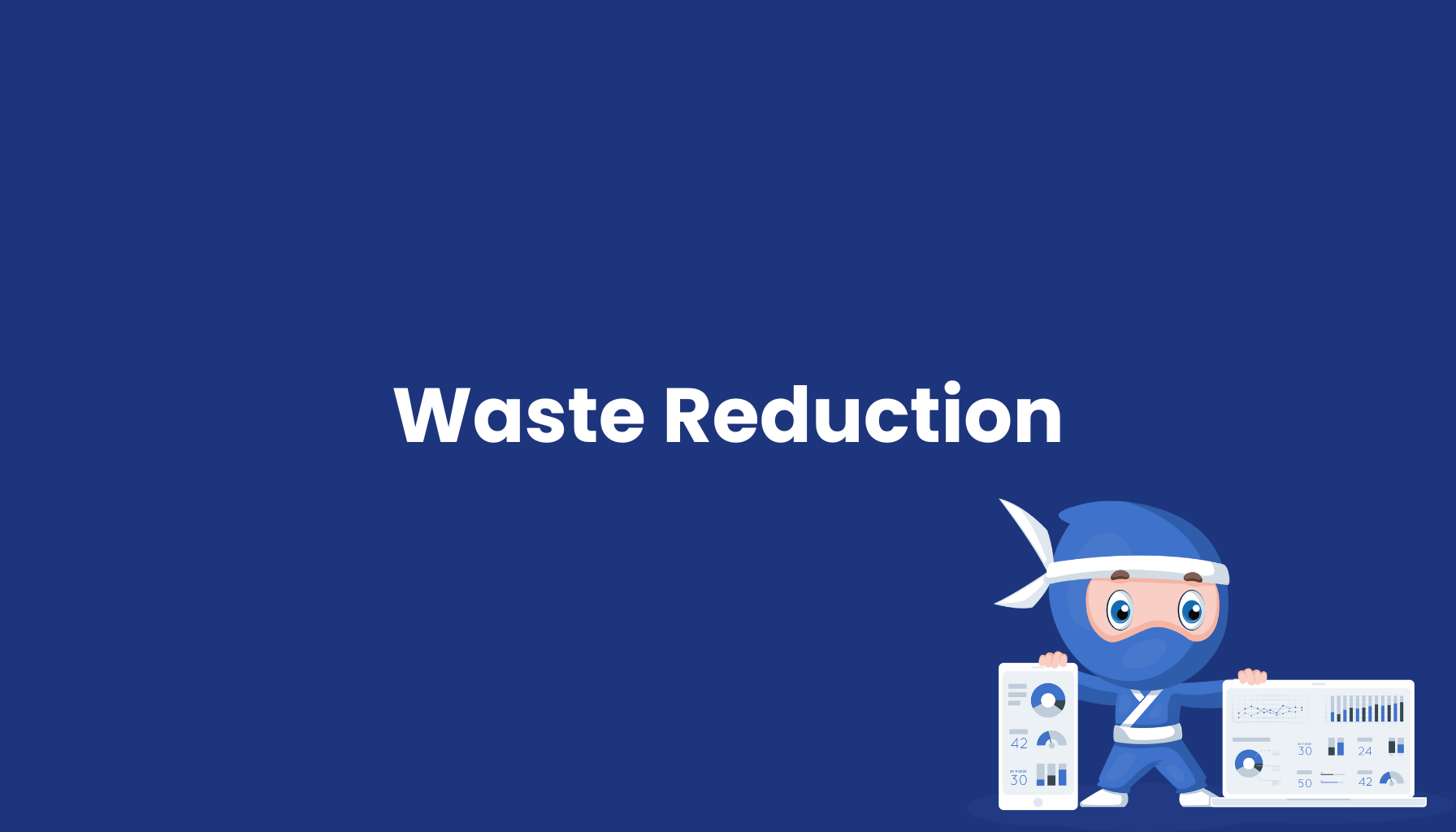Waste Reduction

Definition
Waste Reduction refers to the systematic identification, reduction, and elimination of waste in all business processes to increase efficiency and conserve resources. This concept from Lean Management aims to eliminate all activities that do not create value for the customer, thereby reducing costs, improving quality, and reducing environmental impact.
The Eight Types of Waste (Muda)
Overproduction: Manufacturing more products than needed by customers. Unnecessary inventory and capital tie-up through premature or excess production.
Waiting: Downtime of employees, machines, or materials. Inefficient processes and poor coordination cause productive losses.
Transportation: Unnecessary movement of materials, products, or information. Optimization of material flows and layout design reduces transportation efforts.
Overprocessing: More processing steps than necessary for customer requirements. Over-fulfillment of specifications without additional customer benefit.
Inventory: Excess raw materials, semi-finished goods, or finished products. High storage costs and tied-up capital without direct value contribution.
Motion: Inefficient work movements and ergonomically unfavorable workplaces. Optimized workplace design and workflows.
Defects: Scrap, rework, and quality problems. Error prevention through robust processes and quality assurance.
Unused Employee Potential: Waste of creativity, experience, and improvement ideas. Employee involvement and continuous improvement.
Identification Methods
Value Stream Mapping: Visualization of all process steps to identify value-adding and wasteful activities. Lead times and inventory analysis reveal optimization potential.
Gemba Walks: Regular workplace visits for direct observation of waste. Leaders recognize problems through personal presence on-site.
5S Methodology: Systematic workplace organization uncovers hidden waste. Order and cleanliness improve efficiency and quality.
Spaghetti Diagram: Visualization of movement paths for materials and personnel. Layout optimization reduces unnecessary transport and movement.
Benefits of Waste Reduction
- Cost Reduction: Direct cost savings through eliminated wasteful activities
- Quality Improvement: Error reduction through focused, standardized processes
- Lead Time Reduction: Faster throughput times through optimized processes
- Employee Motivation: Meaningful work without frustrating waste activities
- Environmental Protection: Resource conservation and CO2 reduction through efficient processes
Implementation Approaches
Just-in-Time Production: Demand-oriented manufacturing reduces overproduction and inventory. Pull principle and Kanban control synchronize production with customer demand.
Total Productive Maintenance (TPM): Preventive maintenance reduces unplanned downtime and quality problems. Employee involvement in maintenance activities improves equipment availability.
Poka Yoke: Error prevention systems automatically eliminate human errors. Technical solutions prevent wrong actions and quality problems.
Continuous Improvement (Kaizen): Systematic optimization of all processes through employee involvement. Small, continuous improvements achieve sustainable effects.
Applications
Production Optimization: Reduction of setup times, machine failures, and quality errors. Optimization of manufacturing processes and material flows for maximum efficiency.
Office Processes: Elimination of redundant activities and media breaks. Digitization and process automation reduce administrative waste.
Logistics and Warehousing: Optimization of inventory levels and picking processes. Cross-docking and milk-run concepts reduce storage and transport costs.
Quality Management: Preventive quality assurance instead of reactive rework. Zero-defect strategies reduce scrap and rework costs.
Measurable Metrics
Overall Equipment Effectiveness (OEE): Combination of availability, performance, and quality for equipment efficiency assessment. Increase in overall equipment effectiveness.
Lead Time: Time from order entry to completion. Lead time reduction through waste elimination.
Inventory Turnover: Ratio of consumption to average inventory. Higher turnover frequency through demand-oriented procurement.
First-Pass Yield: Share of error-free products on first pass. Quality improvement through error prevention.
Digital Support
Lean Software: Digital tools for value stream analysis and waste identification. Automated data collection and evaluation of metrics.
IoT Sensors: Real-time monitoring of machines and processes. Automatic detection of downtime and inefficiencies.
Artificial Intelligence: Pattern recognition for identifying hidden waste. Predictive analytics for preventive optimization.
Mobile Apps: Smartphone-based tools for employees to report waste. Gamification elements motivate active participation.
Employee Involvement
Training and Workshops: Sensitization of all employees to types of waste. Method training for identification and elimination of Muda.
Improvement Suggestions: Systematic collection and processing of employee ideas. Reward systems for effective improvements.
Teamwork: Cross-functional teams address cross-departmental waste. Joint problem-solving and experience exchange.
Leadership Development: Management training in Lean principles and waste reduction. Role model function and continuous support.
Sustainability and Environmental Protection
Circular Economy: Reuse and recycling of materials and waste. Closing material loops reduces resource consumption.
Energy Efficiency: Reduction of energy consumption through optimized processes. Lean Energy concepts identify energy waste.
CO2 Reduction: Transport optimization and process improvement reduce greenhouse gas emissions. Sustainable production through waste reduction.
Water Management: Reduction of water consumption and wastewater generation. Lean principles for environmentally friendly production.
Challenges and Solutions
Cultural Change: Overcoming resistance to change. Change management and continuous communication.
Short-term Costs: Investments in improvements with long-term benefits. Business case development for waste reduction.
Complex Processes: Identification of waste in networked systems. Systems thinking and holistic view.
Success Measurement: Quantification of waste reduction and benefits. Metric systems and regular evaluation.
Future Trends
Industry 4.0 Integration: Networked systems automatically identify waste. Self-optimizing processes through real-time data.
Artificial Intelligence: Machine learning recognizes waste patterns and suggests optimizations. Autonomous process improvement.
Sustainable Lean: Integration of environmental aspects in waste reduction. Green Lean for ecological and economic optimization.
Waste Reduction develops into a holistic approach for sustainable business management that combines economic success and ecological responsibility through digital technologies, employee involvement, and environmental responsibility.


